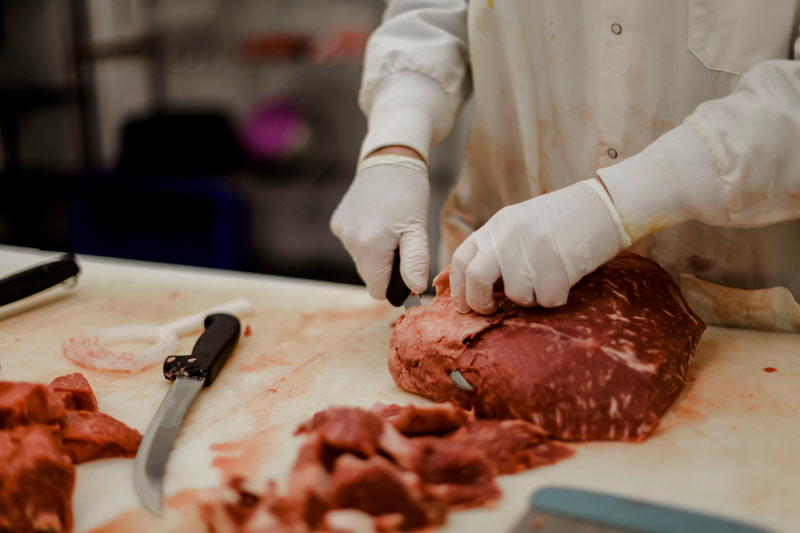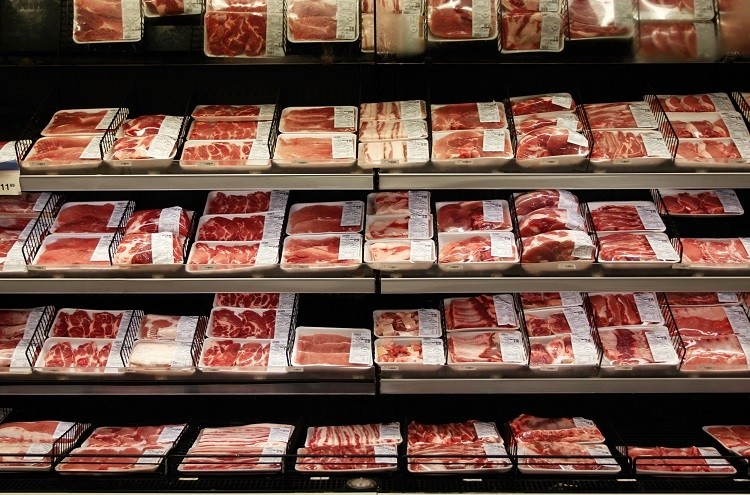Experience Bagley Farms Meat Market: Regional Meats with Global Flavors
Experience Bagley Farms Meat Market: Regional Meats with Global Flavors
Blog Article
Your Comprehensive Source for Expert Tips on Navigating the Meat Market Scene and Making Informed Acquisitions
Browsing the world of meat purchasing can commonly really feel like a complicated labyrinth, with various cuts, grades, and tags including layers of complexity to the decision-making procedure. For those looking for to make enlightened choices and elevate their cooking experiences, recognizing the subtleties of the meat market scene is critical. From deciphering the difference between prime and option cuts to unraveling the mysteries behind different certifications, a wealth of professional pointers waits for those happy to untangle the keys of the butcher's domain name. By understanding the art of picking fresh, top quality meat and discovering to engage properly with butchers, people can not only enhance the tastes on their plate however additionally make certain decisions that align with their values and preferences.
Understanding Different Cuts and Qualities
When it concerns buying meat, understanding the distinctions in between various cuts and grades is vital for making educated choices at the market. The cut of meat refers to the particular muscle mass team where the meat is sourced, while the grade is a quality classification based upon factors like marbling, inflammation, and maturity of the animal. Prime quality meats have the highest level of marbling, making them tender, juicy, and tasty, but they also tend to be extra expensive. Option grade meats are somewhat leaner with less marbling but still provide good top quality for a lower cost point. Select grade meats have the least marbling, making them leaner however potentially less tender. It's important to consider the cooking technique when choosing a cut and quality of meat-- for instance, well-marbled cuts like ribeye are terrific for barbecuing, while leaner cuts like sirloin may be much better suited for toasting or braising. By understanding the distinctions between grades and cuts, consumers can make more enlightened choices when acquiring meat.
Choosing Quality and fresh Meat
To make sure ideal preference and security in your dishes, it is important to carefully select fresh and top quality meat when buying at the market. When choosing fresh meat, look for cuts that have a vibrant color, company appearance, and are not slimy however damp.
Checking for ideal labeling, such as USDA qualifications or qualities, can additionally assure you of the meat's high quality and security. By being watchful in your selection process, you can appreciate risk-free and scrumptious dishes made from fresh, high-quality meat.
Decoding Labels and Certifications
Understanding the tags and qualifications on meat products is vital for making notified choices about the top quality and origin of the meat you acquire. When navigating the meat market scene, it is necessary to look for labels such as "USDA Certified Organic," which shows that the meat was generated adhering to stringent natural criteria without using artificial pesticides, antibiotics, or hormonal agents. An additional crucial label to see for is "Grass-Fed," which suggests the animals were fed a diet regimen mostly including grass or forage. This label often suggests visit our website a leaner product with greater degrees of omega-3 fats.


Qualifications like "Pet Welfare Accepted" or "Certified Humane" signify that the animals were elevated in gentle conditions, with accessibility to outdoor spaces and honest therapy. On the other hand, "Non-GMO Task Verified" shows that the meat comes from pets that were not fed genetically modified microorganisms. By understanding these labels and certifications, consumers can make more ethical and lasting options when purchasing meat products.
Involving With Butchers for Advice
Making informed selections concerning the meat you purchase see this here can be further boosted by seeking support from knowledgeable butchers that have useful knowledge regarding different cuts, high quality, and sourcing practices. Butchers are experienced experts that can offer insights into the most effective cuts of meat for specific recipes, recommend different choices based upon availability or spending plan, and deal suggestions on proper handling and storage to optimize quality and taste.
Engaging with butchers enables customers to ask concerns about the source of the meat, including whether it is in your area sourced, organic, grass-fed, or sustainably elevated. By fostering a partnership with a relied on butcher, customers can acquire a deeper understanding of the meat they acquire, making certain that it lines up with their values and preferences.
In addition, butchers can share cooking tips, recipe recommendations, and even butcher special cuts to meet individual choices. Their know-how prolongs beyond simply selling meat; they can aid in dish planning, section sizing, and provide suggestions on corresponding ingredients to create tasty and all-around dishes - Bagley Farms Meat Market. By leveraging the understanding and experience of butchers, customers can make more educated decisions when browsing the meat market scene

Optimizing Value and Budgeting
When considering optimizing worth and budgeting in the meat market, it is vital to assess the expense per serving and check out cost-effective cuts that still offer great flavor and quality. By recognizing the expense per serving, consumers can make enlightened choices concerning which cuts of meat provide the ideal worth for their budget. One method to maximize worth is to buy larger cuts of meat and portion them in the house, conserving cash contrasted to pre-cut options. Additionally, going with much less preferred cuts, such as chuck or sirloin, can supply significant cost savings without endangering on preference or inflammation when prepared properly.
Another technique for budget-conscious buyers is to make use of sales, discounts, or mass getting choices. Buying in bulk and freezing parts for later usage can help reduce overall costs per serving. It is additionally advantageous to develop a connection with regional butchers or meat suppliers, as they may provide special offers or discounts to devoted customers. Click This Link By being mindful of cost, checking out alternate cuts, and leveraging discounts, customers can stretch their meat spending plan without compromising top quality.
Verdict
In conclusion, understanding the different cuts and qualities of meat, picking fresh and quality products, decoding tags and certifications, seeking guidance from butchers, and optimizing worth and budgeting are vital steps for browsing the meat market scene and making informed acquisitions. Bagley Farms Meat Market. By following these professional pointers, consumers can make educated decisions when acquiring meat and guarantee they are getting the finest worth for their money
When it comes to buying meat, recognizing the distinctions between different cuts and qualities is necessary for making informed options at the market. The cut of meat refers to the particular muscle mass group from which the meat is sourced, while the quality is a high quality classification based on aspects like marbling, inflammation, and maturity of the animal. It's vital to think about the food preparation method when picking a cut and quality of meat-- for instance, well-marbled cuts like ribeye are wonderful for grilling, while leaner cuts like sirloin might be better suited for roasting or braising.Comprehending the tags and accreditations on meat items is important for making informed choices concerning the quality and origin of the meat you acquire. When navigating the meat market scene, it's important to look for tags such as "USDA Qualified Organic," which shows that the meat was produced following rigorous organic standards without the usage of artificial pesticides, antibiotics, or hormones.
Report this page